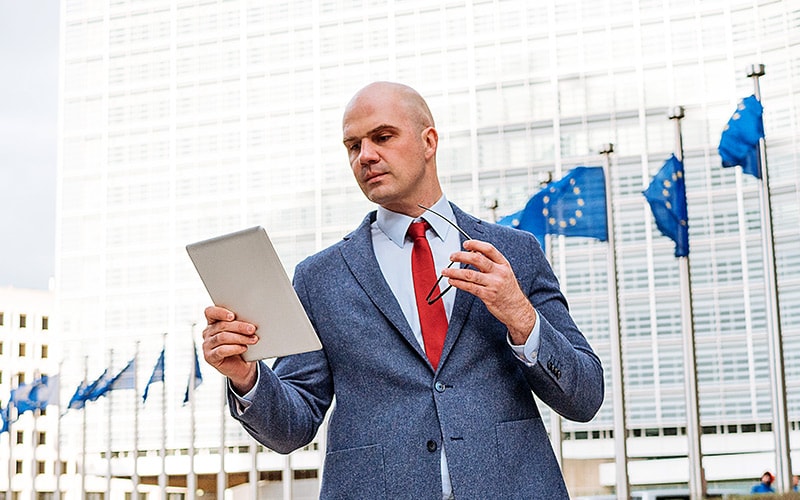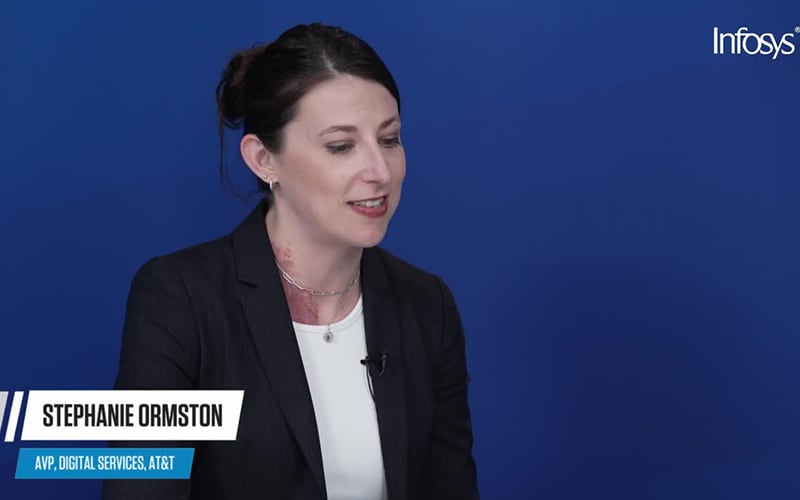Insights
- Even though 84% of current technology assets are legacy, almost all will modernize in the next five years, as per the Infosys Modernization Radar 2022.
- Financial institutions face numerous modernization challenges, but the most important ones are talent, business agility, and cost.
- While the current approach to modernization isn’t entirely wrong, institutions often overlook the nuances that come with it.
- Legacy modernization requires a multistrategy approach that can help achieve a higher chance of success.
- Business or technology decisions to modernize typically align with six key drivers, comprising a mix of business and technology goals that present a comprehensive map for decision makers.
- A comprehensive multistrategy approach covers drivers, risks, and rewards, and expedites decision making.
- Yet, retaining specific mainframe components presents notable business challenges, particularly concerning personnel. This can be addressed through (1) Investing in comprehensive documentation and (2) developing a holistic career development plan.
A trifecta of modernization challenges
Many financial institutions grapple with outdated, inefficient, and security-vulnerable legacy systems. The need to modernize is undeniable, yet the path is fraught with challenges. To successfully navigate and minimize risks, institutions must adopt a multistrategy approach that encompasses technology, business processes, and change management.
Legacy systems pose a significant challenge for financial institutions aiming to stay competitive and agile amid changing customer dynamics. Modernization is crucial, driven by factors such as talent shortages, the need for business agility, and cost concerns.
Yet many institutions look at modernization from the lens of a single, focused strategy, often overlooking the nuances inherent in each challenge.
The need to modernize
Even though 84% of current technology assets are legacy, almost all will modernize in the next five years, as per the Infosys Modernization Radar 2022. Adding to the urgency, half of this legacy pool involves critical business systems.
There are many reasons for financial institutions to modernize, including to improve customer experience to serve a new demography of customers, reduce operational expenditure, and build reliable and resilient systems that talk to various technologies and bring out the best from their data silos.
When Citizens Financial Group, a mid-tier US organization, migrated to cloud, it developed over 100 application programming interfaces, set up a cloud landing zone, and built new cloud-first applications, leveraging deep automation for applications and infrastructure. This helped the institution provide its customers Paycheck Protection Program benefits during the pandemic. It developed apps in the cloud, submitted loan applications to the small business administration, and emerged as a top 15 global lender, processing 48,000 loan applications and disbursing roughly $5 billion in timely loans.
The dilemma of legacy systems
But modernizing is not easy, short, or light on the pockets. In fact, over two-thirds of banks undergoing digital transformation fail to meet their stated objectives, as per McKinsey. Modernization can also disrupt business continuity and stakeholder experiences. Gartner estimates that just one hour of downtime can cost a business $300,000.
For banks, it goes beyond costs, impacting customer trust and relationships. A classic example is TSB Bank, which was fined £48.7 million by UK regulators in 2022. The bank had an IT meltdown during the migration of customer accounts from a legacy system to a more digital infrastructure in 2018. The failed migration left over a million customers locked out of their accounts and numerous others defrauded. The poor experience drove customers to terminate their relationship with the bank, in addition to the millions in damages that the bank had to pay. The bank paid $1 billion to help it deal with its botched migration, recruited 1,800 people, and moved 700 existing staff to customer-facing roles.
Enterprises face numerous modernization challenges, but the most important ones are:
- Talent: The US financial sector relies heavily on over 200 billion lines of active COBOL code, with COBOL powering more than 90% of ATMs. But today’s coders prefer languages compatible with artificial intelligence, machine learning, or cloud computing. The skilled COBOL coders, often in their 50s or 60s, contribute to a significant skill shortage. Even when financial institutions secure talent for modernization, long-term retention becomes challenging. Continuous retraining in modern languages becomes essential to keep the workforce relevant.
- Business agility: For businesses to remain competitive and responsive to market changes, agility is crucial. Unfortunately, legacy systems, including mainframes, often impose structural limitations to agility. This can delay a product’s time to market. They are also not ideally suited to Agile programming methods — mainframe teams need to collaborate with teams working on other technologies, whose processes are different. This leads to delays, errors, and inefficiencies that slow down software production and result in less timely feature releases. Regulatory requirements, competition, and government mandates worsen this challenge.
- Cost: Banks spend millions, if not billions, to modernize their architecture. Operating and maintaining legacy systems can be costly, both in terms of hardware and software support and the risk of regulatory fines due to noncompliance. Reducing these costs while modernizing is a top priority for many.
The multistrategy approach to legacy modernization
While the current approach of taking a single, focused strategy to modernization isn’t entirely wrong, it isn’t right either. Institutions taking this approach often overlook the nuances that come with each issue.
Legacy modernization is not a one-size-fits-all endeavor. It requires a multistrategy approach that addresses diverse needs and constraints of an organization. Success, often viewed through distinct lenses by both business and technology stakeholders has a higher chance of success and be more effectively achieved through a multistrategy approach because:
- Resources are optimally used as required between modernization themes such as accelerate (on the mainframe), renew (around the mainframe), and transform (off the mainframe). This multimodal approach strikes a balance between the resource-intensive transform theme and the accelerate and renew themes.
- Institutions often undertake singular paths such as rehosting, refactoring, or reengineering. While rehosting is a cost-effective way of modernizing and forms the basis for other transformational initiatives, it isn’t transformational. This could be a success in terms of infrastructure and development processes, but not in terms of technology. A multimodal approach ensures comprehensive success across all undertaken initiatives undertaken, as it blends all themes by suggesting strategies based on modernization drivers.
The modernization framework
Business or technology decisions to modernize typically align with six key drivers, comprising a mix of business and technology goals that present a comprehensive map for decision makers. These drivers include:
- Business agility: Address challenges related to low agility and prolonged time to market.
- Talent: Resolve issues associated with legacy skill sets.
- Cost: Mitigate high operational costs.
- Tech stack: Overcome obstacles posed by a monolithic architecture that hampers integration with other digital systems or impedes enhancements to meet new and emerging needs.
- User experience: Enhance overall user experience.
- Organizational strategy: Incorporate considerations such as cloud adoption journey.
These drivers steer the modernization strategy – whether to remain on the mainframe, to go around the mainframe, or to go off the mainframe. It is necessary to understand which driver aligns with the current business dynamics and whether the associated goals are feasible in the current economic and business conditions. This helps understand the challenges in the modernization journey and outlines prioritization and sequencing of components.
A comprehensive modernization framework, covering drivers, risks, and rewards, expedites decision making. It helps determine the necessity of modernization and which components require application.
Figure 1. The modernization framework
Source: Infosys
Analyzing each decision based on the drivers, their risks and benefits facilitates nuanced choices about how to approach modernization. A multistrategy modernization approach resolves challenges around talent, agility and cost, and technology issues through rehosting or reengineering.
Yet, retaining specific mainframe components presents notable business challenges, particularly concerning personnel. Encouraging skilled individuals to engage with legacy mainframe languages poses a significant dilemma. Here are two strategic solutions to address this:
- Invest in comprehensive documentation: Leverage existing mainframe expertise to create thorough documentation encompassing business rules. AI-powered guided workflows streamline the extraction process, minimizing errors and enhancing efficiency. This approach ensures smooth reverse engineering without hindrance. Well-documented processes facilitate seamless integration of legacy business logic into future applications. Additionally, this initiative generates valuable knowledge artifacts that serve as training and reference materials.
- Develop a holistic career development plan: HR departments should craft a comprehensive career path for mainframe talent, offering growth opportunities within the organization. Training must be provided on emerging technologies and facilitate a smooth transition into new projects as existing ones phase out. This strategy ensures sustainable engagement and commitment of skilled professionals in the evolving landscape of mainframe technology.
Legacy modernization stands as an essential undertaking for financial institutions, but it comes with challenges and risks. To succeed, firms need a well-rounded plan – assess cautiously, modernize incrementally, integrate smoothly, develop talent, manage change, and mitigate risks. A holistic modernization strategy that is carefully planned and executed positions institutions for long-term success in an ever-evolving technological landscape.
Modernization is not just about staying current; it's about securing a legacy of resilience and innovation.





